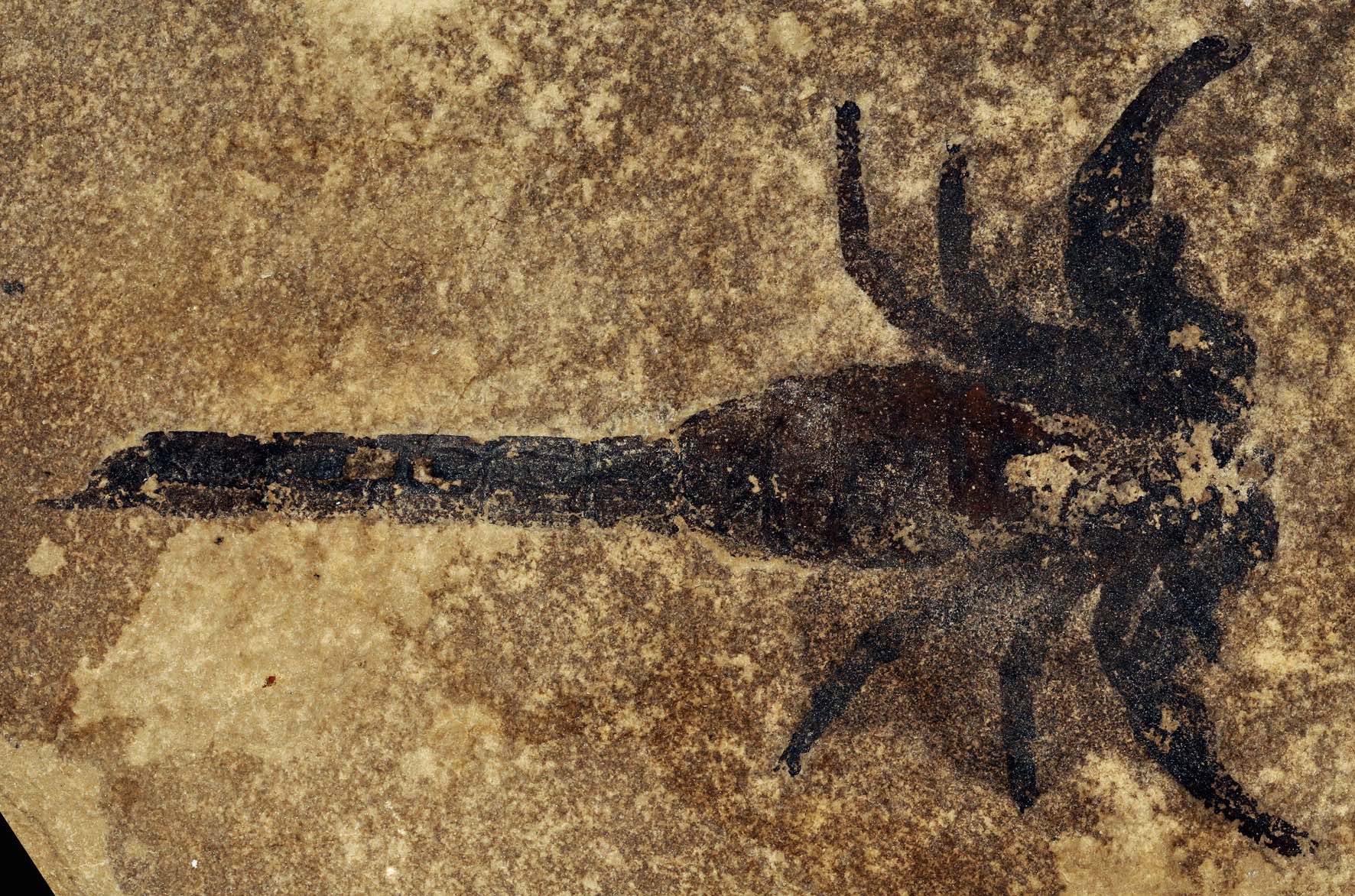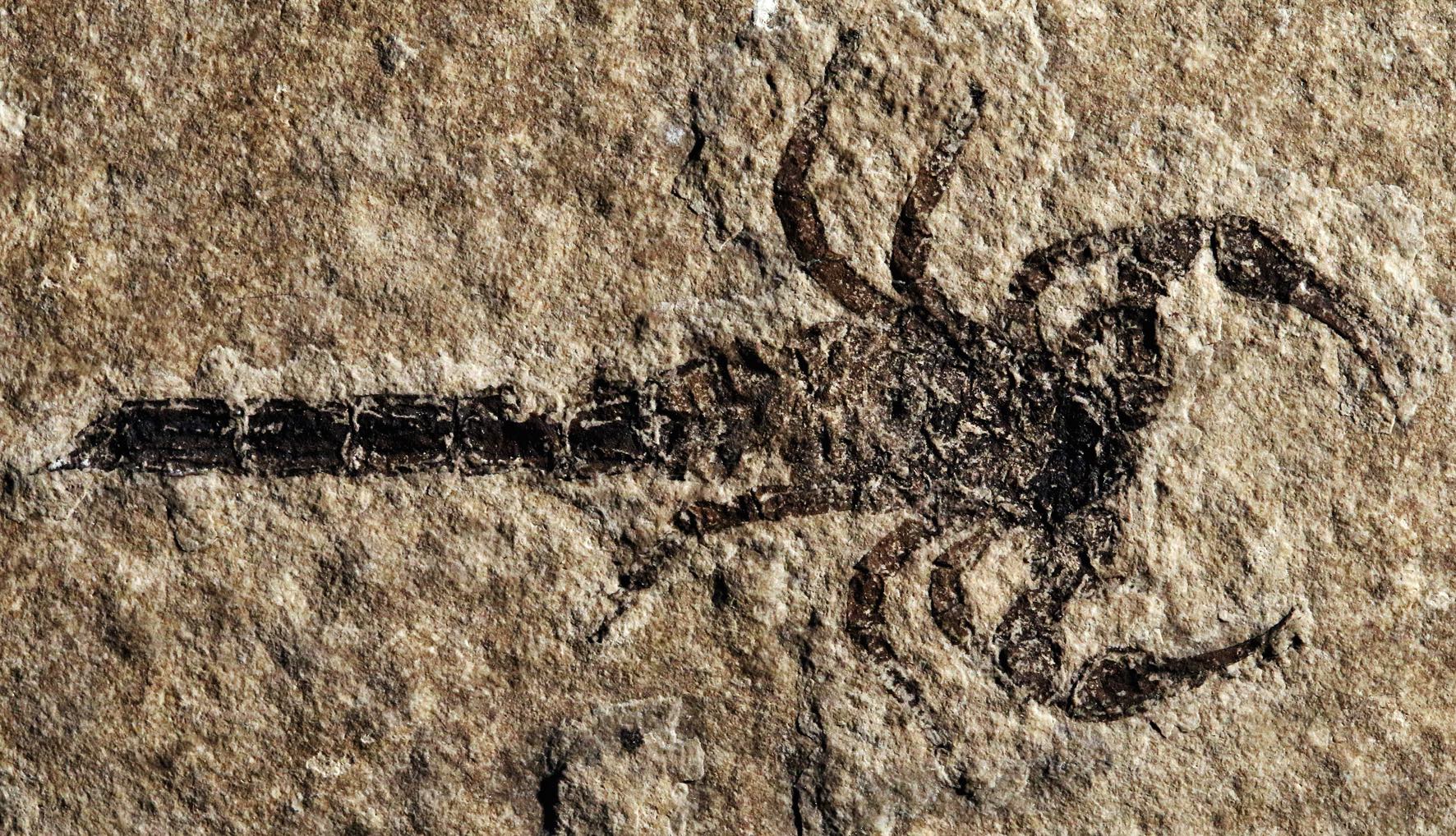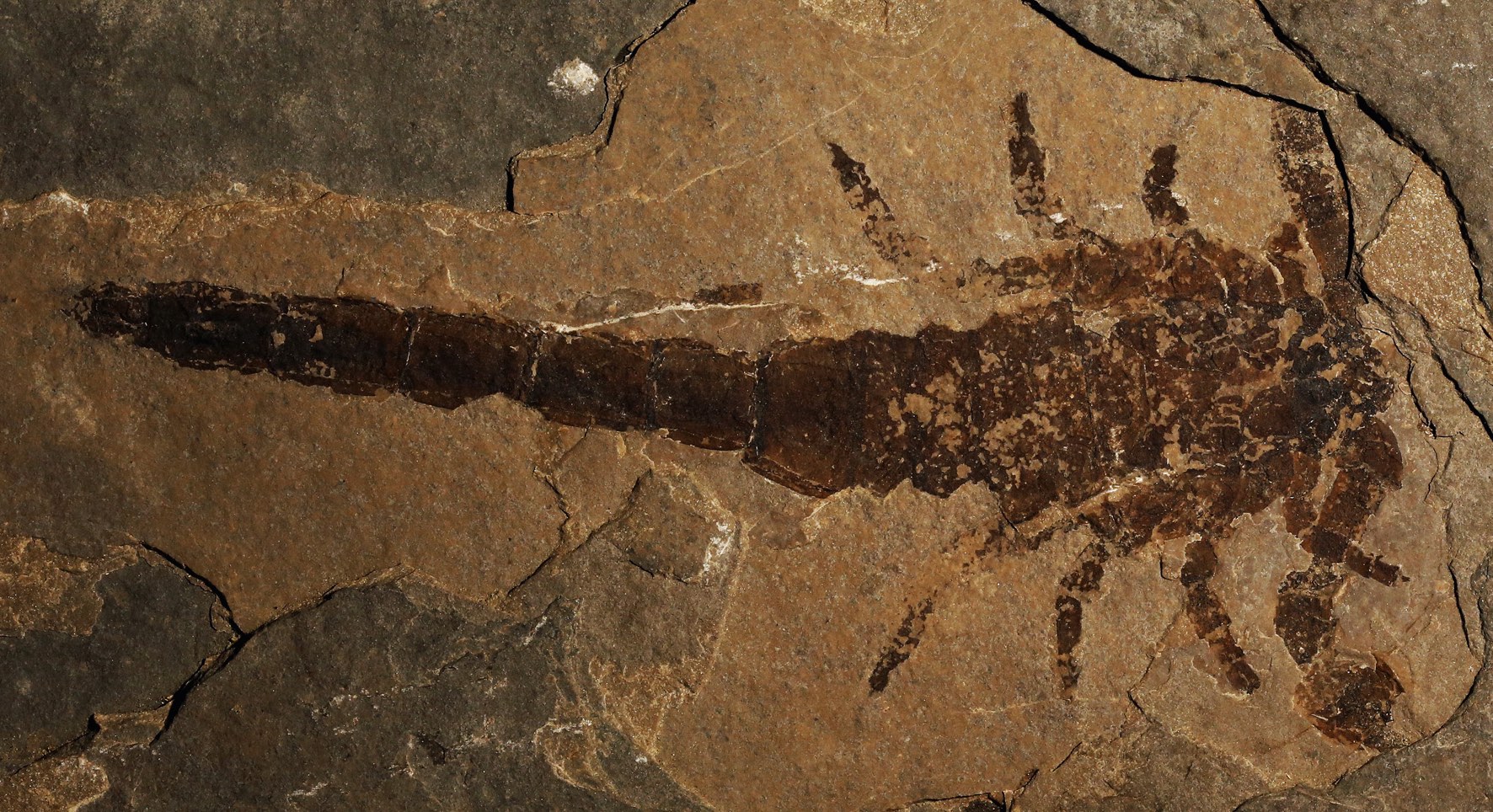Ancient Scorpion Had Feet, May Have Walked Out of Ocean

A new scorpion species found fossilized in the rocks of a backyard could turn the scientific understanding of these stinging creatures on its head.
The fossils suggest that ancient scorpions crawled out of the seas and onto land earlier than thought, according to the researchers who analyzed them. In fact, some of the oldest scorpions had the equipment needed to walk out of their watery habitats and onto land, the researchers said. The fossils date back some 430 million to 433 million years, which makes them only slightly younger than the oldest known scorpions, which lived between 433 million and 438 million years ago.
The new species "is really important, because the combination of its features don't appear in any other known scorpion," said study leader Janet Waddington, an assistant curator of paleontology at the Royal Ontario Museum in Toronto. [25 Amazing Ancient Beasts]
Backyard fossils

The new species fell into Waddington's hands almost by happenstance. Museum curators frequently get calls about fossils, most of which are run-of-the-mill, she told Live Science. But a woman who called about an "insect" in her backyard stone wall had something very exciting on her hands.
"When she showed me this fossil, I just about fell on the floor, it was so amazing," Waddington said.
The fossil was no insect, but rather a scorpion — and a new species at that. Over the years, more specimens trickled in, mostly from patio stones and rock quarries, and one from a mislabeled fossil at a national park on Canada's Bruce Peninsula. Now, Waddington and her team have 11 examples of the new species, ranging in length from 1.1 inches (29 millimeters) to 6.5 inches (165 millimeters).
Sign up for the Live Science daily newsletter now
Get the world’s most fascinating discoveries delivered straight to your inbox.
What made the animal, dubbed Eramoscorpius brucensis, so fascinating was its legs.
Walking in water
Previously, the earliest scorpion fossils found came from rocks that were originally deposited in the water, leading paleontologists to believe that the animals evolved on the seafloor, like crabs, and only later became landlubbers. Ancient scorpions had legs like crabs, with a tarsus, or foot segment, that was longer than the segment preceding it. This arrangement, Waddington said, would have meant the creatures walked on their "tippy-toes," such as crabs do today.
But E. brucensis was different. This species had a tarsus segment that was shorter than the segment before it, which would have made it possible for the animal to set its tarsus flat against the ground. In other words, this scorpion had feet.
"They could have walked on their feet, which is really important because it meant that they could have supported their own weight," Waddington said. Without the need for water to buoy them up, the animals could have walked on land.

The fossils also show that the scorpions' legs were solidly attached at the body, without the exaggerated "hinge" seen in scorpions that would have needed water to stay upright. What's weird, Waddington said, is that all the other features of these scorpions seem aquatic. They are found in marine rocks, and their digestive systems appear to require water (in today's land scorpions, digestion begins outside of their bodies, a process that requires adaptations these ancient scorpions lack).
Waddington said she and her team suspect that the fossils they've collected are not the bodies of dead scorpions at all. Instead, they may be molts, exoskeletons left behind as the scorpions grow. Scorpions are incredibly vulnerable during molting, Waddington said, and in deep water, ancient squidlike animals would have loved a helpless scorpion snack. The scorpions that could haul themselves out of the water onto the shore to escape predators would have had a survival advantage. The rocks that house the scorpion fossils often feature ripples that would have been created when wind blew thin films of water over land, suggesting a shoreline lagoon habitat.
What that means is that the first adaptations that scorpions developed for life on land could have appeared much earlier than researchers thought.
"Our guys are really, really old," Waddington said. "They're vying for the second-oldest [scorpions] known."
The researchers reported their findings today (Jan. 13) in the journal Biology Letters.
Follow Stephanie Pappas on Twitter and Google+. Follow us @livescience, Facebook & Google+. Original article on Live Science.

Stephanie Pappas is a contributing writer for Live Science, covering topics ranging from geoscience to archaeology to the human brain and behavior. She was previously a senior writer for Live Science but is now a freelancer based in Denver, Colorado, and regularly contributes to Scientific American and The Monitor, the monthly magazine of the American Psychological Association. Stephanie received a bachelor's degree in psychology from the University of South Carolina and a graduate certificate in science communication from the University of California, Santa Cruz.










